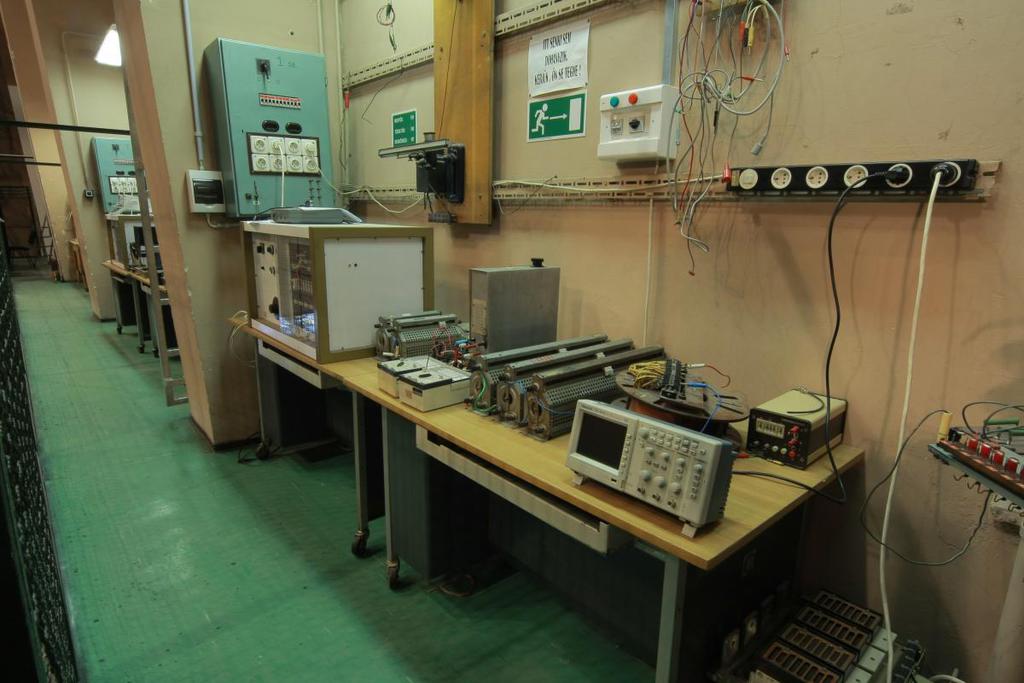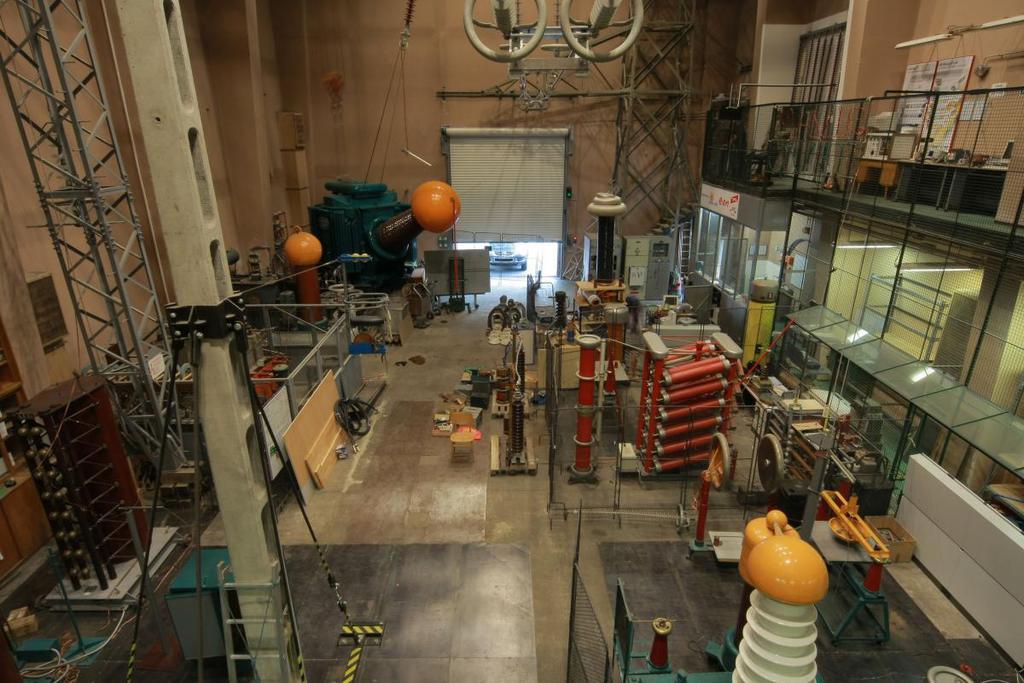About | Copyright © 2024 Budapest University of Technology and Economics
The short history of the Laboratory
Since 1936 the Department of Electric Power Engineering of the Faculty of Electrical Engineering and Informatics of Budapest University of Technology and Economics is available for education and research of electrical energy and high voltage technology. Nowadays tasks related to high voltage technology and equipment are performed by the Group of High Voltage Technology and Equipment. The Laboratory is also available to external industrial companies.
The history of high voltage technology began, when ancient Greeks discovered electrostatics. In the 19th century significant improvements were achieved in Hungary including the high voltage technology. In the 1860-1870’s Ányos Jedlik invented the tubular voltage generator, which is actually the ancestor of modern impulse generators. In 1885 Károly Zipernowsky, Miksa Déry and Ottó Bláthy patented the first transformer of the world with closed magnetic core, which was one of their most important inventions.

In 1893 Károly Zipernowsky became the head of the Department of Electrotechnics of the Royal Joseph University.
In the semester of 1906/07 the Block “F” was inaugurated for the Royal Joseph University, which was named Block “FE” (physics-electrotechnics) in that time. Its auditorium and laboratory were equipped with modern machines and devices by Károly Zipernowsky. Among the equipment there was a 200 kV transformer. Due to modern devices and illustrious professors the education and research of electrotechnics were outstanding at the Royal Joseph University.
After his earlier industrial achievements on 21st of August 1929 László Verebélÿ was appointed to a professorship and to the head of the Department of Electrotechnics. He completely renewed the curriculum of the department, which contained the education of the theory and application of electrical machines, power lines, overhead lines, structures of cables and switchgear.
In 1936 the construction of the High Voltage Laboratory was started by Verebélÿ. The first equipment was a 250 kV test transformer, made by Ganz Works. Originally the transformer was located in the Block “FE”, and it was moved to its final location after the construction of the Block “V1” and the High Voltage Laboratory. The equipment is still in use every day for different measurements and presentations.
In the 1930’s, education of a Practical Electrostatics began, which included the high voltage technology in its syllabus. It contained education about insulators, the breakdown process, breakdown of gases, laboratory experiments and equipment. In 1937 the new name of the department became Department of Power Systems and Railways.
In 1943 the department and the laboratory was equipped with an AEG impulse generator, which is capable of generating up to 1 MV peak value impulses, and it is also still in use.

During the Second World War the equipment of the University were transported in order to protect them. In November 1944 Verebélÿ protested against dismounting and transporting the equipment of the High Voltage Laboratory. The protest was followed by success. Most of the equipment of the department were saved from devastation due to the determined behavior of Verebélÿ.
In 1946 Professor Verebélÿ started to write his textbook, Electrical Power Transmission in four volumes. The first volume was Practical Electrostatics and its curriculum was used until the sixties.
In 1950 the design of the Block “V1” and its High Voltage Laboratory began. In 1958 the Block “V1” was finished, and the Department of Power Systems and Railways occupied its new, current location. However, the High Voltage Laboratory was not put in final form until 1959.
After the retirement of László Verebélÿ, in 1958 Ottó P. Geszti was assigned to be the head of the department. In 1961 the department was divided into two parts. The head of the Department of Power Systems became Professor Ottó P. Geszti, the head of the Department of High Voltage Technology and Equipment became Professor János Eisler.
Professor Eisler was the first to lay down the fundamentals of the Insulation Technology subject, and composed its syllabus. A new kind of research appeared, the previously practical activity started to change with the appearance of theoretical research of high voltage technology. Professor Eisler introduced the non-destructive examination of insulations as a new project, examined by Endre Németh and András Csernátonyi-Hoffer in details later. The elaboration of the examination of insulations with DC voltage is also related to Endre Németh.
In 1972 the High Voltage Laboratory was equipped with a 600 kV TUR test transformer and soon after with a 750 kV impulse generator. At the same time the first renovation of the Laboratory took place.
In the 1970’s Dr. Gábor Bán and Dr. Tibor Horváth were the deputy heads of the department. Since the 50’s Dr. Tibor Horváth worked at the department as the right hand of László Verebélÿ. As a world-famous scientist and as an expert of lighting protection, he has many internationally accepted theories. His most famous theory was the rolling sphere method, which revolutionized lighting protection.
After Dr. Ottó P. Geszti between 1985 and 1988 the head of the department was Dr. Tibor Horváth, followed by Dr. Gábor Bán.
From 30th of June 1991 to 2001 the Department of High Voltage Technology and Equipment operated as an independent department.
Since 2001 the Department of Power Systems, the Department of High Voltage Technology and Equipment and the Department of Electrical Machines and Drives were united into the Department of Electric Power Engineering by the decision of the Faculty of Electrical Engineering and Informatics. The current head of the department is Dr. István Kiss.
In 2012 the High Voltage Laboratory was completely renovated, all costs being defrayed by industrial partners.